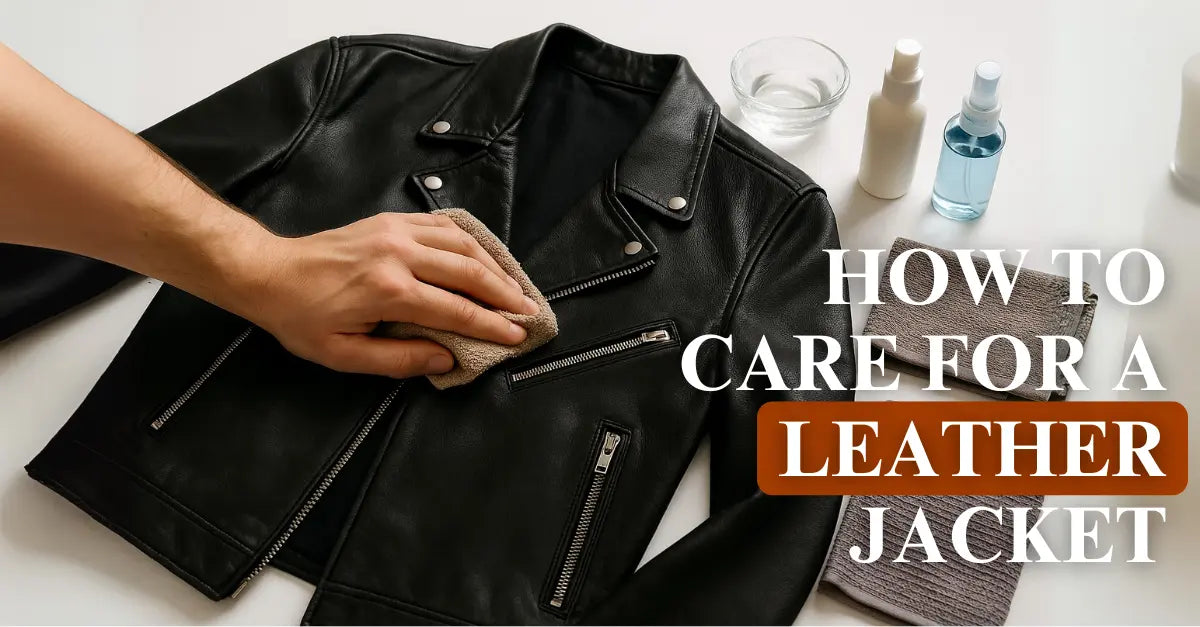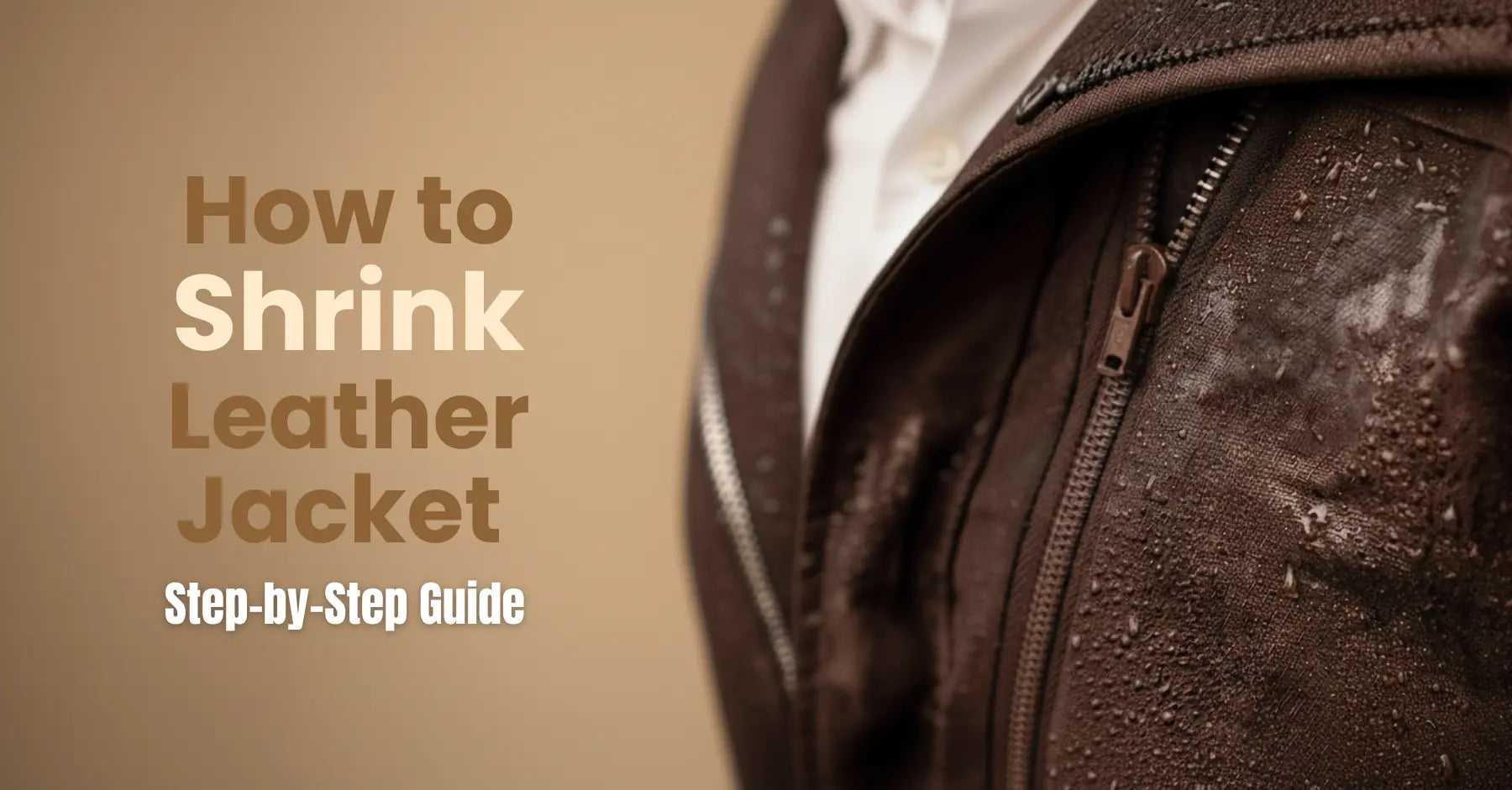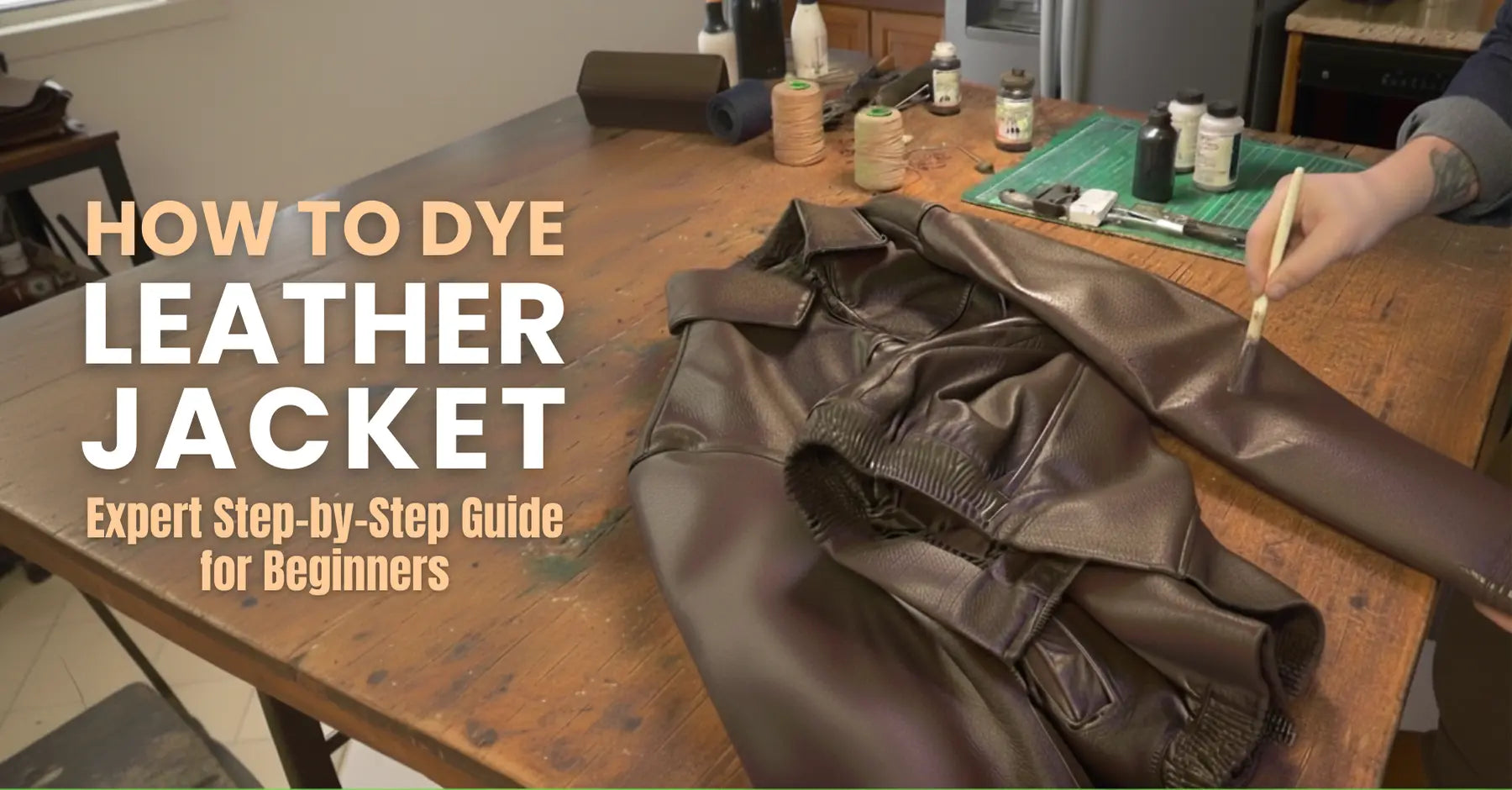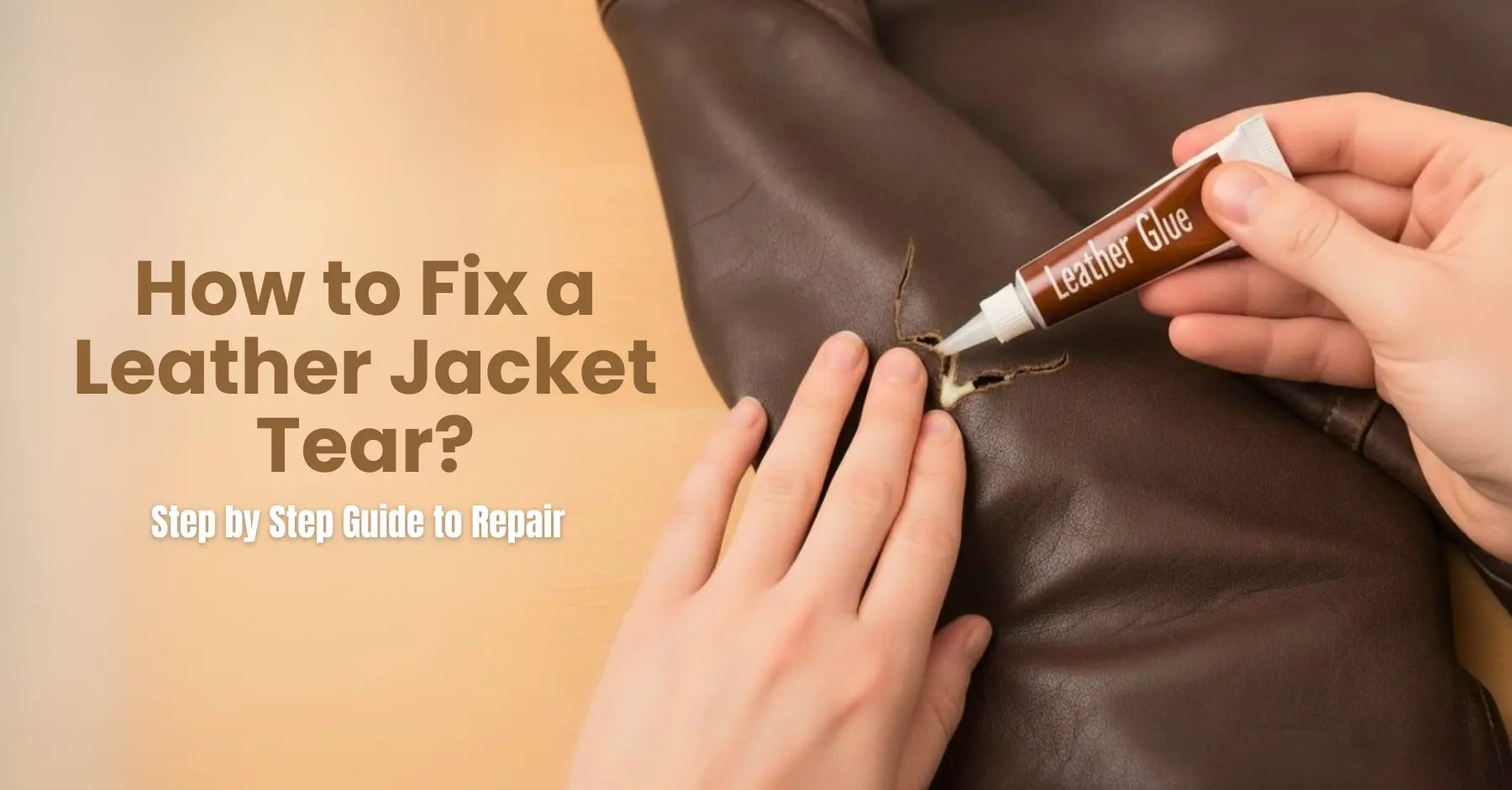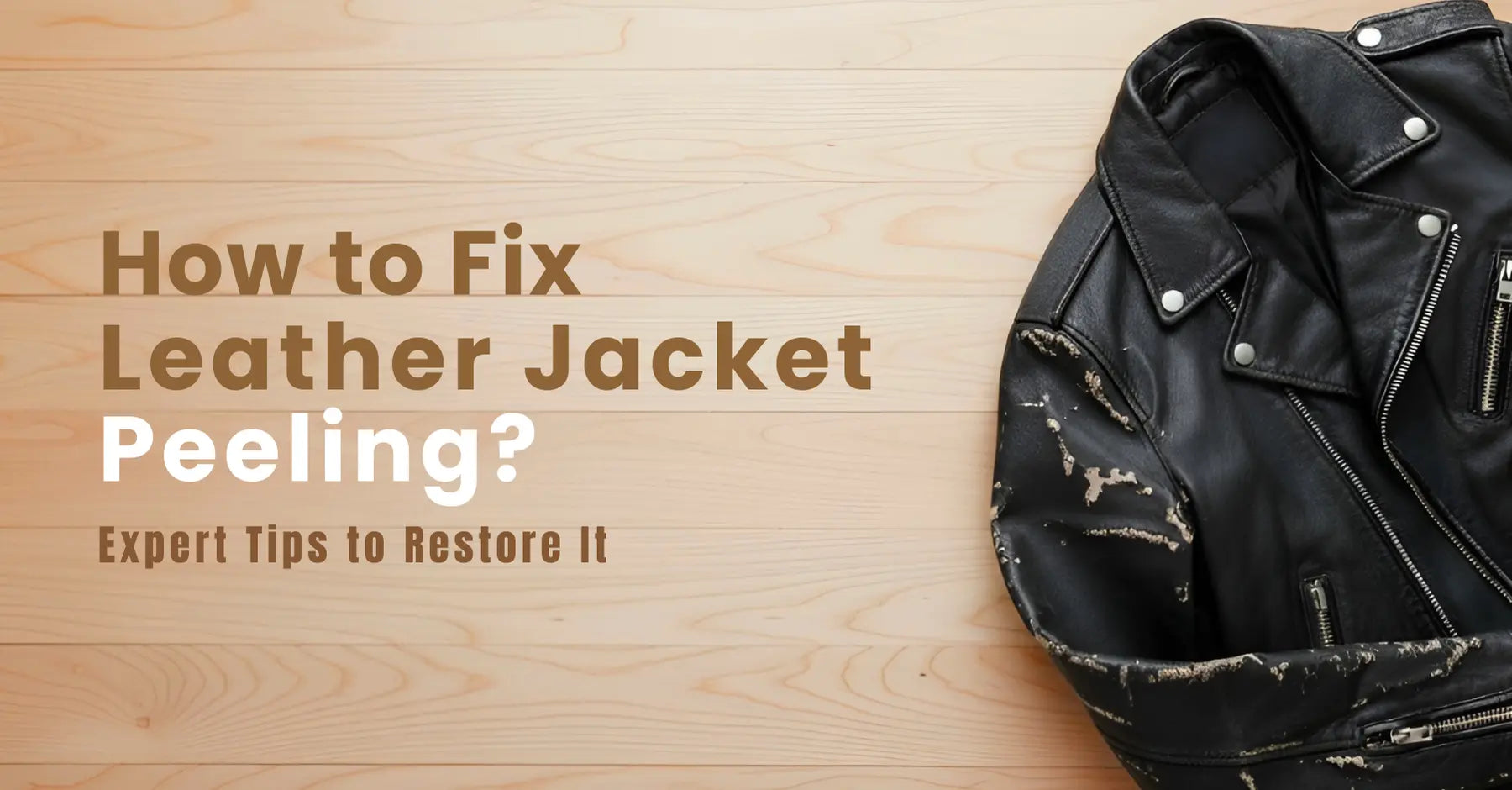Caring for your leather jacket is essential to preserve its style and durability. Avoid using a washing machine or over-wetting it, as this can cause serious damage. For routine cleaning, use a damp cloth to gently remove dirt and rely on a specialist cleaner for tough stains.
Always check the care labels to avoid mistakes, and keep the lining, whether cotton, polyester, or silk, clean and fresh with soapy water. Regular conditioning prevents cracks and extends the lifespan of your jacket, while proper storage in a dry space keeps mould and wear at bay.
What Should You Do Before Cleaning a Leather Jacket?
When caring for your leather jackets, carefully read the care label attached inside. Test any cleaning product on a small, inconspicuous area of the jacket to ensure it won’t cause discolored debris from the surface before proceeding. By taking these steps, you can extend the life of your leather jacket and keep it in great condition.
How Do You Safely Remove Stains from a Leather Jacket?

How Can You Get Ink Stains Out of a Leather Jacket?
When dealing with ink stains on your leather jacket, it's always best to act quickly, especially when the stain is still wet. Use Nappa Leather Fresh Ink Remover for the most effective results. If the ink has dried, don't worry – it can still be removed, but prompt action is key. To remove any loose dirt particles, use a Suede and Nubuck Magic Sponge without any cleaning products, and be gentle, particularly with Aniline and Nappa leather. After use, wash the sponge in warm water. Regular care, including the application of a protector, will help prevent future stains.
How to Clean Mold and Oil Stains Off a Leather Jacket?
Mold is one of the last things anyone wants to deal with on their leather jacket. To avoid it, always store your leather in a cool, dry place. If mold does appear, take your jacket outside and carefully buff the affected area with a lint-free cloth. After buffing, apply a cleaner, followed by a protection spray to ensure the leather stays in good condition. For oil stains, using a cleaning foam specifically designed for Suede, Nubuck, or Sheepskin can help. Applying the foam, then using a cloth to wipe away excess moisture, will keep your leather jacket looking sharp. Always finish off with a conditioner to maintain its softness and sheen.

How Often Should You Condition a Leather Jacket and Why?
What Conditioner Is Best for Leather Jackets?
Pick a conditioner with natural ingredients like beeswax, lanolin, or oils a good example is Smith’s Leather Balm. Avoid products with petroleum or mineral oils. Always test it on a small, inconspicuous area to check for any residue or darkening.
How Do You Apply Leather Conditioner Correctly?
Before applying, clean your jacket to remove grime and make sure it’s dry. Use a small amount of conditioner on a soft cloth and apply it in a circular motion, focusing on affected areas like pockets, elbows, and seams. Let it absorb for a few hours, reducing wrinkles.

What to Do After Conditioning Your Leather Jacket?
After absorption, use a lint-free cloth to buff and give the jacket a nice shine. Let it sit in a ventilated area away from sunlight so any excess moisture or conditioner can evaporate, leaving no soapy water residue.
What's the Right Way to Store a Leather Jacket for Long-Term Use?
Clean with a Soft Cloth Before Storing:
Before putting your leather jacket away for an extended period, it’s essential to ensure it’s free of dirt and oils. Use a clean, soft cloth to wipe it down, as this helps prevent potential damage or permanent staining over time. This small step goes a long way in protecting your jacket’s appearance and health.
Use a Padded Wooden Hanger:
Always hang leather jackets on a padded clothes hanger, preferably a padded wooden hanger, to ensure the shoulders maintain their shape. Avoid wire hangers, as they can misshape the jacket and leave unwanted impressions. Hanging properly helps prevent folding, which can cause creases or even cracks in the leather.

Store in a Cool, Dry Place:
Leather is sensitive to environmental conditions, so it’s crucial to store your jacket in a cool, dry place. Prolonged exposure to sunlight can fade its color, while damp or humid wardrobes encourage mould and mildew growth. To let the natural material breathe, use a breathable fabric bag, like cotton, instead of plastic covers. Ensure there’s enough air circulation in the closet to avoid it being pressed against other items.
Avoid Heat Sources:
Keep the jacket away from radiators, heaters, or any other direct heat sources for long periods, as excessive heat can cause the leather to crack.
Condition Regularly and Add Fresh Scents:
If storing the jacket for an extended period, apply a leather conditioner to keep it supple and moisturized. Place cedar balls or lavender sachets in the storage area to keep it smelling fresh and deter pests without the harsh smell of mothballs.
Common Problems and Solutions:
Preventing Cracks and Peeling:
A leather jacket can develop cracks or start to peel if it isn’t cared for properly. Over time, the leather can dry out due to a lack of natural oils, especially when exposed to sun or rain. Regular use of a leather conditioner is essential to keep the material hydrated and maintain its elasticity. For good quality leather, like full-grain leather, conditioning prevents damage and extends the jacket's lifespan. However, for bonded leather, peeling may occur over time, and unfortunately, there’s often nothing you can do about it once it starts.

Pro Tip:
Avoid harsh products or solvents as they can weaken the surface and damage the finish. Use baby wipes for gentle cleaning without stripping the protective sealant, helping prevent cracks and peeling.
Restoring Stiff Leather:
Leather jackets can become stiff if they are not properly stored or conditioned frequently. Stiffness occurs when the leather loses its supple texture due to dryness or exposure to harsh environments. To restore softness, apply a leather conditioner generously, ensuring even application to revive the material. This reintroduces essential natural oils and improves flexibility.
Avoid using strong chemicals or cleaning products that can further break down the leather.
Pro Tip:
Keep your jacket away from extreme sun or rain, and store it on a sturdy hanger to preserve its shape and texture. Regular care prevents stiffness and keeps it feeling like new.
How Can You Remove Bad Smells from a Leather Jacket?
Leather Jacket Smells Like Chemicals:
If your leather jacket smells like chemicals, it may result from improper tanning, often indicating a badly tanned garment or faux leather. Such chemical smells can cause respiratory problems, so choose vegetable-tanned leather, which uses a lengthier tanning process with fewer chemicals. To fix odors, sprinkle baking soda inside the jacket and leave it for twenty-four hours, effectively removing or reducing the smell without harming the garment's coating.
Leather Jacket Smells Like Fish:
If your jacket releases a fishy smell, start by treating it with natural deodorizers. Sprinkle baking powder over the jacket and let it sit for a few hours to absorb the odour. For strong smells, you may need a good commercial leather cleaner, specifically designed to clean and protect leather without damaging its finish. Avoid cheap alternatives, as they often break down the material over time. Consistent care ensures your jacket stays fresh and stylish for years to come.
Leather Jacket Smells Like Smoke:
A leather jacket, being a natural and permeable material, can consequently absorb smells such as smoke from bars, restaurants, or even standing by a bonfire on Guy Fawkes night. The likelihood of your jacket becoming contaminated with such odors increases, creating a problem that can be easily addressed. To remove the smell of smoke, mix equal parts water and vinegar and apply it with a damp sponge. Afterward, be sure to condition the leather to maintain its quality and keep it in top condition.
Leather Jacket Smells Like Sweat:
If your leather jacket smells like sweat, the lining could be the culprit. The problem might stem from cotton, silk, or rayon materials in the lining, which absorb moisture and cause odours. Instead of using the washing machine, which can ruin the leather and make it shrink, hand wash the lining with a gentle detergent, being careful to avoid soaking the leather. For stubborn odors, consider a leather specialist. After cleaning, avoid strong heat or sunlight; let the jacket dry naturally in a shaded area to preserve its condition and avoid damage to the leather.
Leather Jacket Smells Like Mildew:
If your leather jacket smells like mildew due to being stored in a damp or humid area, you can easily fix it. Mix a solution of fifty percent vinegar and fifty percent water, and gently apply it using a soft cloth to the affected areas, being careful not to over-wet the leather. Afterward, allow the jacket to dry naturally in a well-ventilated area, away from direct sunlight. Once dry, apply conditioner to keep the leather soft and prevent further damage.
FAQs:
Can a leather jacket be ironed?
While some guidance online suggests using a low iron to remove wrinkles from a leather jacket, this practice can easily ruin the material. It's better to avoid wrinkles in the first place by using an appropriate clothes hanger instead. Always choose the safer option to preserve the jacket's quality.
Can a leather jacket be repaired?
A leather jacket can be repaired by an experienced specialist to fix broken stitching, tears, or holes. Simple fixes like re-sewing broken zips and stud fasteners are common repairs, but more noticeable issues may require a patch that can alter the appearance. For optimal results, it's best to consult a professional for these common repairs to maintain the jacket's quality.
What are the disadvantages of wearing a leather jacket?
Real leather is expensive and requires maintenance to preserve its beauty and durability. It is sensitive to environmental factors like moisture, sunlight, and temperature fluctuations, so proper care is essential for longevity.
What weakens leather?
Water, alcoholic drinks, and greasy stains can cause long-term problems for leather, making it sink and ruin over time. Build-ups of perspiration and body oil also contribute to this damage. Clean stains immediately to avoid a lasting issue.

